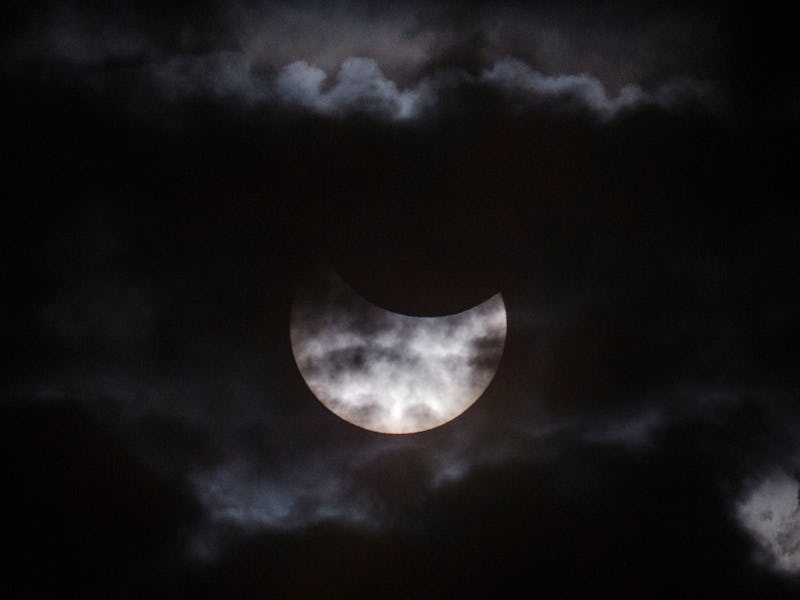Clouds Might Screw Up the Eclipse For Millions of Americans
No one knows yet where nature will get in the way.

Folks are spending a lot of money and effort preparing for the total solar eclipse that will cross the entire United States on August 21. Hotels in the totality have been booked up for months, and officials are anticipating a monster traffic jam on the day of the event.
But there’s a good chance a lot of those folks are going to be disappointed. While flights and travel plans can take months of preparation, weather is impossible to precisely anticipate until just a week or two before the event itself. And any spot in the totality where heavy clouds are in the forecast is in for a torrent of unhappy would-be eclipse watchers.
As of this writing, it’s still too early to know for sure where clouds will show up. (Inverse will update this post when that changes.) But the history of North American August weather, along with early predictions, suggests at least some folks are bound to be disappointed.
Marshall Shepherd, the former president of the American Meteorological Society, writes in Forbes that the steepest historical cloud risks cluster east of the Mississippi.
Average historical cloudiness for August 21
Folks planning to watch from the lower midwest also have cause for concern.
It wouldn’t be the first time bad weather ruined people’s eclipse plans. The last time the totality of an eclipse crossed the contiguous United States was in February 1979, when one passed over the Pacific Northwest in the early morning. But because of cloud cover, hardly anyone got to see it.
At the time, the Eugene Register-Guard described the lackluster scene:
Skies began to darken around 7:45 am, and complete darkness covered Portland — the largest city in the path of the eclipse — by 8:13 am. It began to get light again at 8:16 am.
Residents had to rely on television pictures taken from planes flying above the thick cloud cover…
The skies were saturated with air traffic as observers went aloft to beat the clouds with a view from above.
Other scientists, amateur astronomers and the curious gathered on parking lots, porches, decks, and grassy knolls, with their telescopes, homemade pinhole projectors, and commercial viewers.
For many, the thick cloud-cover turned the eclipse into the greatest cosmic disappointment since the Comet Kohoutek disappeared into the heavens five years ago without living up to its ballyhooed brilliance.
This eclipse, the first with a totality crossing the entire continental United States in 99 years, will almost certainly be seen by millions of Americans. But the question remains: Who’s going to miss out?